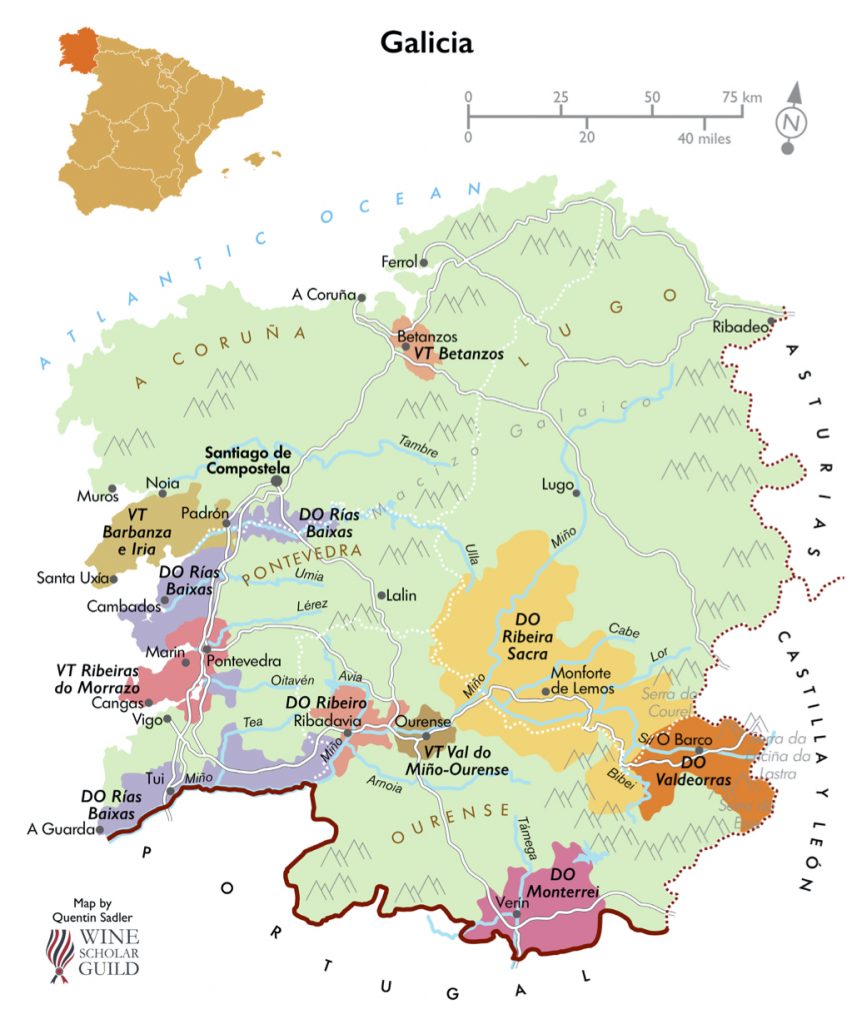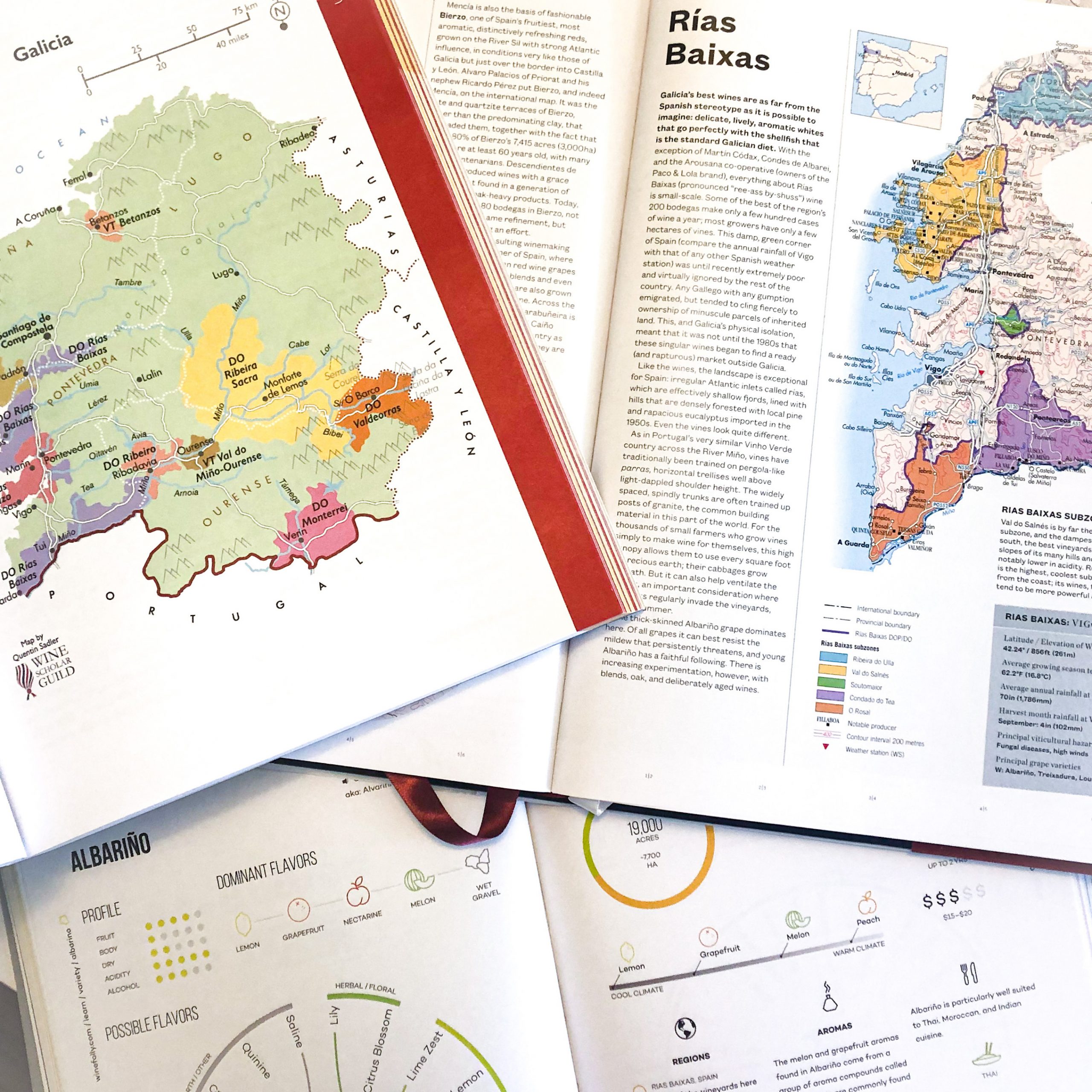One of the most challenging things about wine is comprehending geographical hierarchy. Whether it’s a sub-zone or a premiere cru, I’m continually self-educating so that I can understand wine in its proper context. In honour of International Albariño Day happening this Saturday, August 1st – let’s break down the grape’s origin to get a better grasp of what it can offer in the glass.
First, What’s Albariño?
Albariño is a dry white wine, light in body with high acidity. It’s most common to enjoy young however age-worthy expressions can be found. Its primary fruit aromas are citrus, not unlike a Sauvignon Blanc however with less grassy/green notes. Some stone fruit or melon characteristics are also common. But the telling feature is the salinity. Though not salty, there’s talk among the wine community that salt from the Atlantic Ocean could be deposited on the grape skins, transferring to what ends up in the glass.
Starting with the Big Picture
When talking about Albariño, we’re focusing on the northwest corner of Spain. The little nub the juts out of the Iberian Peninsula is the autonomous community of Galicia. Galicia is surrounded by the Atlantic Ocean to north and west and is bordered by Portugal to the south. To the east are two other autonomous communities, Asturias and Castilla y Leon.
One Step Further
Next, let’s zoom into DO Rias Baixas. Directly translated, Rias Baixas means ‘low rivers’, so we know we’re talking about an area that gets cool Atlantic air funnelled directly down the rivers to the vineyards, many of which are on riverbanks.
Seen here (in purple) on this phenomenal map from the Wine Scholar Guild’s Spanish Wine Scholar course. Your eyes are not deceiving you – DO Rias Baixas is fairly spread out!

Last Step, I Promise
I know, I know – I wish it didn’t have to get more complicated. But think of it this way, sub-zones are THE most specific descriptor. It’s like Disneyland. Sure, we know it’s in California (think of that as Galicia). Most would conclude that Disneyland is the general Los Angeles area (aka – Rias Baixas). But in fact, Disneyland is in Anaheim. Aside from street names, that’s the most specific location that we can identify. Still with me?
What Makes each Subzone Unique?
Val do Salnés:
- considered the birthplace of Albariño
- the coolest of the 5 subzones given it has the greatest amount of exposure along the Atlantic coast
- home to more than 50% of the DO’s total area under vine
- wines with this subzone indicated on the label must be greater or equal to 70% Albariño & Loureira
Condado do Tea:
- the most inland of all 5 subzones making it the warmest
- wines with this subzone indicated on the label must be greater or equal to 70% Albariño & Treixadura
O Rosal:
- sits in the southwest corner of Galicia with some direct exposure to the Atlantic
- vineyards are planted on terraces edging along the north side of the Miño River (which also runs along the Portuguese border)
- wines with this subzone indicated on the label must be greater or equal to 70% Albariño & Loureira
Soutomaior:
- the smallest of the 5 subzones and the only one to focus solely on Albariño
Ribeira do Ulla
- the most northern subzone
- the focus here isn’t Albariño, so I’m just going to move on 🙂

So, What Does This Mean for International Albariño Day?
It means get out there and try one! If you’re already a fan of Albariño, then try to find a bottle with a sub zone indication on the label and see how it compares to what you already know about the grape. If you’ve never had one before, then we now know what you’re sipping on this Saturday!

